In this article:
Warming up is an essential part of any exercise regimen. It helps your body to adapt to the increasing oxygen need, improves flexibility, and enhances muscle efficiency.
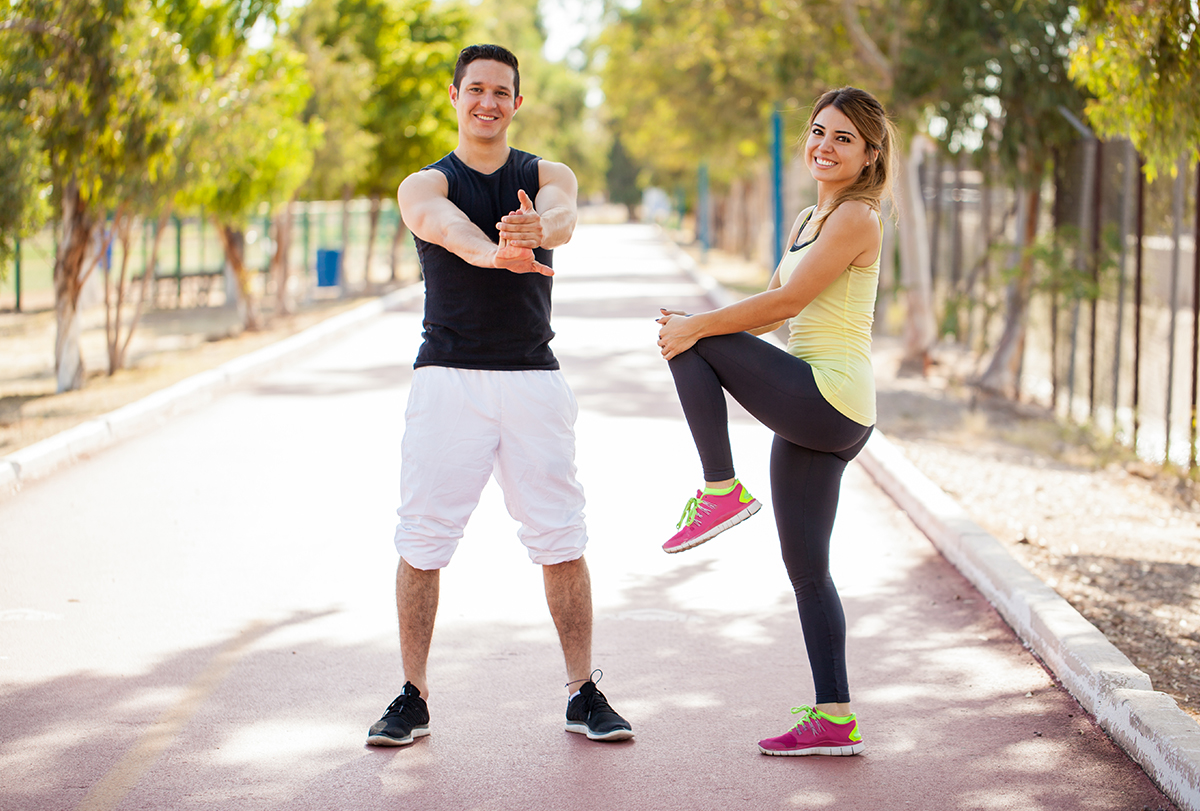
A proper warmup helps in gradually raising your heart rate so that the body isn’t stressed during the exercise. That’s why athletic trainers always instruct their trainees to perform a proper warmup before any physical activity.
The Benefits of Pre-Exercise Warmup Routine
It’s important to warm your body up before any exercise (1) to:
The Dangers of Exercising Without a Warmup
Not performing a proper warmup before exercising highly increases the chances of a muscle strain, such as a hamstring strain.
The other possible damages include:
Warmup Routine: Do’s and Don’ts
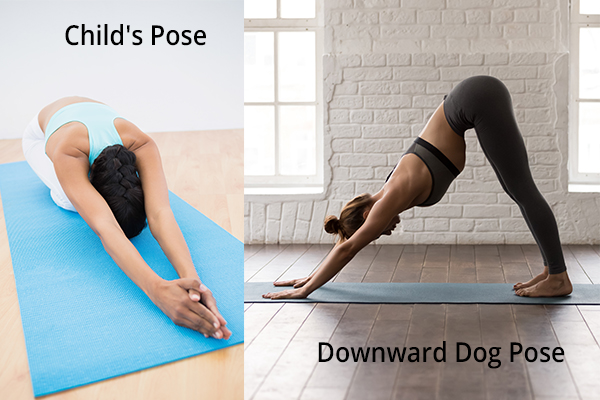
Warmup routines should be specific to your activity. You can perform yoga and weight-bearing exercises such as toning. A simple child’s pose can help stretch your shoulders, back, and hips, where you store so much of your physical tension from being upright and walking.
However, if you were to go jogging, you could try a downward dog to stretch out your legs, back, shoulders, ribs, and side waist. This could be coupled with some side bends and lunges to give the hips some stretch and to help energize the limbs.
On the other hand, you must not use aerobics as a warmup as it gets your heart rate up too fast, while you are looking for a gradual increase.
The Difference Between Warming-Up and Stretching Exercises
Stretching exercises allow you to open your body gently and not force it into sudden action.
On the other hand, warm-up exercises basically consist of cardiovascular exercises, such as knee raises and slow jumping jacks, to help get the heart rate up steadily. This helps avoid any undue or sudden pressure on the heart and lungs.
Warm-Up for Increased Nerve Sensitivity
Warming up helps dilate the blood vessels to increase blood flow and circulation. This, in turn, dissipates the old energy so that new energy can come in to nourish and hydrate the body.
Moreover, warming up helps increase body temperature, thus improving nerve transmission. These changes may help your nerves fire better.
Warm-Up Sessions Help Loosen Your Muscles
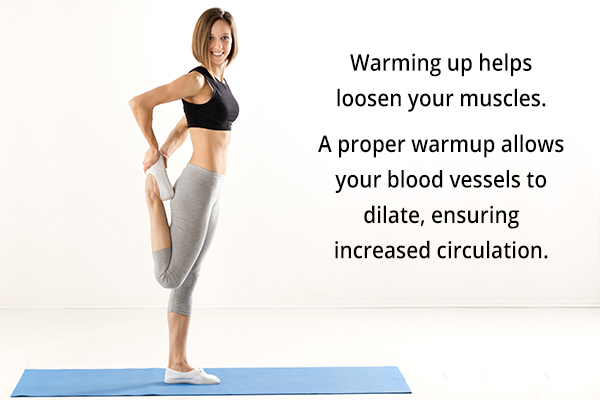
A proper warmup allows your blood vessels to dilate, ensuring increased circulation. This, in turn, increases the blood supply to the muscles, enabling them to function better. (7)
Besides, the increase in body temperature helps improve muscle metabolism, increasing muscle efficiency. (2)
How Long Should the Warmup Last Before the Exercise?
The length of your warmup depends on your length of activity. In general, you should warm-up for about 5–8 minutes for an hour-long practice or exercise. (7)
Best Warmup Activities Before Exercises
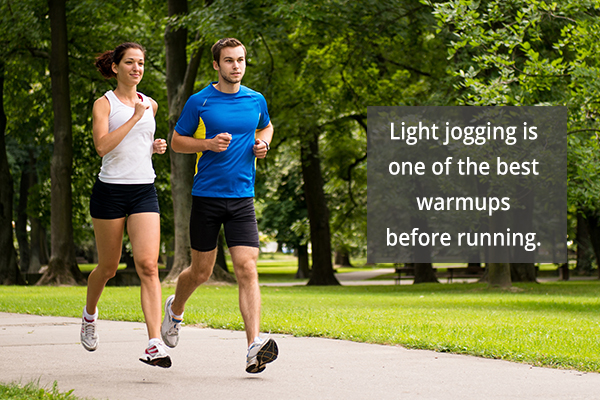
Anything to get your heart rate up a bit and provide a little bit more length to your muscles, even a nice walk, is a great way to warm up your body.
- For running, you could start with a light jog.
- When performing a gym or sports activity, you can try stationary cycling.
- In general, dynamic stretches are considered efficient warmup exercises. These include walking lunges and deep squats.
- You may also perform standing stretches, such as:
- Side bends: Raise your right arm above your head and tilt your body to the left. Hold the position for a few seconds and switch.
- Chest stretch: Try to interlock your fingers behind your back by stretching the arms.
- Mid back stretch: Lock your fingers in front of you, with your hands in a straight, stretched position.
- Knee bends: Position your feet at shoulder width and stretch out your hands. Bend your knees to lower yourself slowly and stand back up.
- Shoulder roll: Stretch your arms to the sides and roll your shoulder forward and backward, 5 times each.
- Overhead shoulder stretch: Interlock your fingers and stretch your hands above your head. Make sure to keep your back and neck straight.
- Knee lifts: Stand straight and bring up your right knee to your left hand, and alternate.
- Heel digs: Bring one heel to the front with the foot pointing up.
Note: Be sure to hold each stretch for at least 30 seconds. Do not bounce your stretches as it can cause ballistic injury.
Should a Warmup Session Be Accompanied by a Cool Down?
It is imperative to perform cool downs after your exercises to reap the maximum benefits of your physical workout. (8) Moreover, cooling down helps your body return to the normal state and prevents muscle problems.
Key Points to Keep in Mind for a Safe and Successful Warm-Up
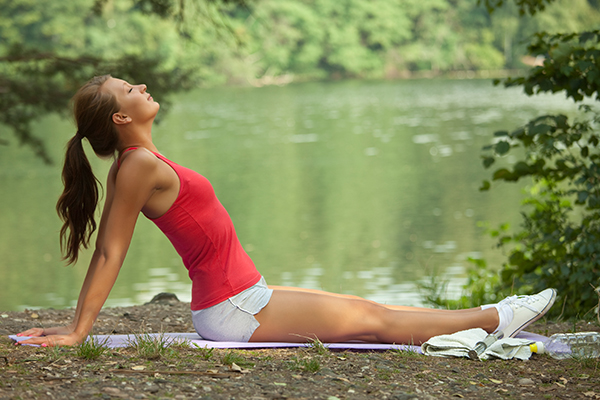
The following pointers can be useful during a warmup:
- Your breath is the most important tool in a warmup sequence.
- Stay mindful when you are exercising.
- Listen to your body to avoid injury.
Final Word
An exercise regimen has multiple benefits, and it is imperative to warm up to make your workout efficient. Warming up helps lower the chances of injury, increases blood flow in the body, elevates muscle temperature, and expands your breathing capacity. These effects help your body respond better to increased physical stress.
- Was this article helpful?
- YES, THANKS!NOT REALLY


